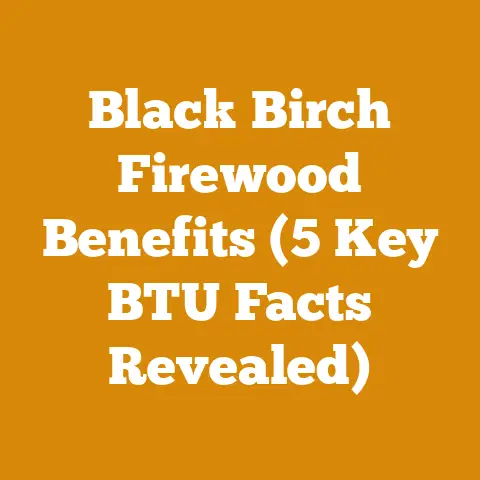What to Do for Bagworms on Arborvitaes (Pro Woodcare Hacks)
Let’s dive in!
I remember one particularly brutal summer a few years back. I was working with a client who had invested heavily in a beautiful row of arborvitaes to create a privacy screen. They were thriving, providing exactly the aesthetic he wanted… until they weren’t. Suddenly, brown patches started appearing, and the trees looked stressed. Upon closer inspection, we discovered a full-blown bagworm infestation. It wasn’t just about aesthetics; it was about the potential loss of a significant investment. That experience taught me the importance of proactive monitoring and a data-driven approach to tree care. Treating bagworms isn’t just about spraying chemicals; it’s a project in itself, with measurable outcomes and costs. Let’s break down how to tackle this problem effectively, using metrics to guide our decisions.
What to Do for Bagworms on Arborvitaes: A Pro’s Guide to Project Management for Healthy Trees
Bagworms can wreak havoc on arborvitaes, turning a beautiful green screen into a brown, unsightly mess. But dealing with them effectively requires more than just a quick spray. It requires a project-oriented approach, complete with defined goals, measurable metrics, and a commitment to continuous improvement. Neglecting bagworms can lead to defoliation, stunted growth, and even death of the tree, resulting in significant financial loss if you need to replace them.
Why Track Metrics in Bagworm Control?
Tracking metrics in bagworm control is essential for several reasons:
- Effectiveness: Metrics help you determine if your chosen treatment method is actually working.
- Cost Efficiency: By tracking costs and results, you can optimize your spending and avoid unnecessary treatments.
- Preventative Measures: Analyzing past infestations and treatments can help you develop preventative strategies for the future.
- Resource Allocation: Metrics allow you to allocate resources (time, labor, materials) more effectively.
- Environmental Impact: Tracking chemical usage helps minimize environmental impact and promote sustainable practices.
Here’s a breakdown of key metrics I use and recommend, along with how to interpret them and apply them to your own bagworm control projects:
-
Infestation Level (Severity Index)
- Definition: A quantitative measure of the extent of the bagworm infestation on each tree or across your entire arborvitae screen. This can be a simple scale (e.g., 1-5, with 1 being minimal and 5 being severe) or a more detailed count of bagworms per branch or tree section.
- Why It’s Important: Knowing the initial infestation level is crucial for establishing a baseline. It allows you to track the effectiveness of your treatment and determine if the infestation is spreading or receding.
- How to Interpret It: A high initial infestation level (e.g., 4 or 5 on a 1-5 scale) indicates a serious problem requiring immediate and aggressive treatment. A low level (e.g., 1 or 2) might allow for more conservative treatment options.
-
How It Relates to Other Metrics: The infestation level directly impacts the treatment cost and the time required for control. It also influences the potential for tree damage, which can translate to long-term replacement costs. For instance, if the severity index is high, more labor and materials will be required, increasing the cost.
-
Practical Example: Let’s say I’m working on a project with ten arborvitaes. I inspect each tree and assign an infestation level based on the following criteria:
- Level 1: Few bags, mostly on inner branches, minimal visible damage.
- Level 2: Moderate number of bags, some visible damage to foliage.
- Level 3: Numerous bags, significant foliage damage, some branch dieback.
- Level 4: Heavy infestation, widespread foliage damage, significant branch dieback.
- Level 5: Very heavy infestation, complete defoliation, potential for tree death.
After inspection, I record the following:
- Tree 1: Level 2
- Tree 2: Level 3
- Tree 3: Level 1
- Tree 4: Level 4
- Tree 5: Level 2
- Tree 6: Level 3
- Tree 7: Level 1
- Tree 8: Level 2
- Tree 9: Level 3
- Tree 10: Level 4
The average infestation level across all trees is 2.5. This gives me a general sense of the overall severity of the problem and helps me prioritize treatment. 2. Treatment Cost per Tree
-
Definition: The total cost associated with treating each individual arborvitae. This includes the cost of insecticides, labor, equipment rental (if any), and any other associated expenses.
- Why It’s Important: Tracking the cost per tree allows you to compare the cost-effectiveness of different treatment methods. It also helps you budget for future treatments and estimate the overall cost of maintaining your arborvitae screen.
- How to Interpret It: A high treatment cost per tree might indicate that you’re using an expensive insecticide or that the labor costs are excessive. It could also suggest that the infestation is particularly severe, requiring more intensive treatment.
-
How It Relates to Other Metrics: The treatment cost is directly related to the infestation level, the chosen insecticide, and the labor time. It also impacts the overall project budget and the potential return on investment (e.g., the value of the trees saved). If the labor time increases, the cost will increase.
-
Practical Example: I recently completed a bagworm treatment project where I used two different insecticides: Bacillus thuringiensis (Bt) and a pyrethroid-based insecticide.
- Bt Treatment (Trees 1-5):
- Insecticide cost: $10
- Labor (including travel, setup, application, and cleanup): 2 hours at $50/hour = $100
- Equipment (sprayer rental): $5
- Total cost per tree: $10 + $100 + $5 = $115
- Pyrethroid Treatment (Trees 6-10):
- Insecticide cost: $5
- Labor: 1.5 hours at $50/hour = $75
- Equipment: $5
- Total cost per tree: $5 + $75 + $5 = $85
This data shows that the pyrethroid treatment was more cost-effective in this case. However, I also need to consider the effectiveness of each treatment and the potential environmental impact. 3. Labor Time per Tree
- Bt Treatment (Trees 1-5):
-
Definition: The amount of time (in hours or minutes) required to treat each individual arborvitae. This includes travel time, setup time, application time, and cleanup time.
- Why It’s Important: Tracking labor time allows you to identify inefficiencies in your treatment process. It also helps you estimate the time required for future treatments and allocate labor resources effectively.
- How to Interpret It: A high labor time per tree might indicate that you’re using an inefficient application method, that the trees are difficult to access, or that the infestation is particularly severe.
-
How It Relates to Other Metrics: Labor time is directly related to the treatment cost and the infestation level. It also impacts the overall project timeline and the availability of labor resources. If the trees are difficult to access, the labor time will increase.
-
Practical Example: Let’s say I’m comparing two different application methods: a backpack sprayer and a truck-mounted sprayer.
- Backpack Sprayer (Trees 1-5):
- Travel time: 30 minutes
- Setup time: 15 minutes
- Application time: 45 minutes
- Cleanup time: 15 minutes
- Total labor time per tree: 1.75 hours
- Truck-Mounted Sprayer (Trees 6-10):
- Travel time: 15 minutes
- Setup time: 10 minutes
- Application time: 30 minutes
- Cleanup time: 10 minutes
- Total labor time per tree: 1.08 hours
This data suggests that the truck-mounted sprayer is more efficient in terms of labor time. However, I also need to consider the cost of renting or owning the truck-mounted sprayer and whether it’s suitable for the specific terrain and tree size. 4. Insecticide Application Rate
- Backpack Sprayer (Trees 1-5):
-
Definition: The amount of insecticide used per tree or per unit area (e.g., ounces per tree, gallons per acre).
- Why It’s Important: Tracking the application rate ensures that you’re using the correct amount of insecticide for effective control. It also helps you minimize the potential for overuse, which can be harmful to the environment and to beneficial insects.
- How to Interpret It: An application rate that is too low might result in ineffective control, while an application rate that is too high can be wasteful and potentially harmful. Always follow the manufacturer’s instructions for the specific insecticide you’re using.
-
How It Relates to Other Metrics: The application rate is directly related to the treatment cost and the effectiveness of the treatment. It also impacts the environmental impact of the treatment. If the rate is too low, the treatment won’t be effective.
-
Practical Example: I always keep detailed records of the insecticides I use, including the application rate. Here’s an example:
- Insecticide: Bacillus thuringiensis (Bt)
- Manufacturer’s Recommended Rate: 4 ounces per gallon of water
- Application Rate: 1 gallon of solution per tree (for trees up to 6 feet tall)
By tracking this data, I can ensure that I’m applying the Bt at the recommended rate and that I’m not wasting insecticide or potentially harming the environment. 5. Mortality Rate (Bagworm Count Reduction)
-
Definition: The percentage reduction in the number of bagworms after treatment. This is calculated by comparing the number of bagworms before treatment to the number after treatment.
- Why It’s Important: The mortality rate is a direct measure of the effectiveness of your treatment. It tells you whether the insecticide is killing the bagworms and whether you need to consider alternative treatment options.
- How to Interpret It: A high mortality rate (e.g., 90% or higher) indicates that the treatment is working well. A low mortality rate (e.g., less than 50%) suggests that the treatment is ineffective and that you need to re-evaluate your approach.
-
How It Relates to Other Metrics: The mortality rate is directly related to the insecticide application rate, the timing of the treatment, and the overall health of the trees. It also impacts the long-term health and appearance of the arborvitaes. If the mortality rate is low, the trees won’t recover.
-
Practical Example: Two weeks after treating the arborvitaes, I return to assess the mortality rate. I randomly select three branches from each tree and count the number of live bagworms.
- Before Treatment: Average of 20 live bagworms per branch
- After Treatment: Average of 2 live bagworms per branch
The mortality rate is calculated as follows:
- (20 – 2) / 20 = 0.9
-
- 9 x 100% = 90%
This indicates that the treatment was highly effective, with a 90% reduction in the number of live bagworms. 6. Tree Recovery Rate (Foliage Regrowth)
-
Definition: A measure of the extent to which the arborvitaes recover after treatment. This can be assessed by visually inspecting the trees and noting the amount of new foliage growth. It can be a qualitative assessment (e.g., poor, fair, good, excellent) or a more quantitative measure (e.g., percentage of foliage regrowth).
- Why It’s Important: The recovery rate indicates the long-term health and vitality of the trees. It tells you whether the treatment was successful in preventing further damage and allowing the trees to recover.
- How to Interpret It: A high recovery rate (e.g., excellent foliage regrowth) indicates that the trees are healthy and resilient. A low recovery rate (e.g., poor foliage regrowth) might suggest that the trees are stressed or that the treatment was not entirely successful.
-
How It Relates to Other Metrics: The recovery rate is related to the infestation level, the mortality rate, and the overall health of the trees. It also impacts the aesthetic value of the arborvitae screen and the potential for future infestations. If the recovery rate is low, the trees will be vulnerable to future problems.
-
Practical Example: Three months after the bagworm treatment, I assess the tree recovery rate.
- Tree 1: Excellent foliage regrowth, new growth covering most of the damaged areas.
- Tree 2: Good foliage regrowth, significant new growth, but some bare patches remain.
- Tree 3: Fair foliage regrowth, some new growth, but many bare patches remain.
- Tree 4: Poor foliage regrowth, minimal new growth, significant dieback.
- Tree 5: Excellent foliage regrowth.
- Tree 6: Good foliage regrowth.
- Tree 7: Fair foliage regrowth.
- Tree 8: Poor foliage regrowth.
- Tree 9: Good foliage regrowth.
- Tree 10: Excellent foliage regrowth.
Based on this assessment, I can identify the trees that are recovering well and those that might require additional care, such as fertilization or pruning. 7. Preventative Treatment Frequency
-
Definition: How often you apply preventative treatments to your arborvitaes to avoid future bagworm infestations. This could be measured in treatments per year or the time interval between treatments.
- Why It’s Important: Preventative treatments can significantly reduce the risk of future infestations, saving you time, money, and potential damage to your trees.
- How to Interpret It: The optimal treatment frequency depends on the severity of past infestations, the local climate, and the specific insecticide you’re using.
-
How It Relates to Other Metrics: The preventative treatment frequency is related to the infestation level, the mortality rate, and the tree recovery rate. It also impacts the long-term cost of maintaining your arborvitae screen. If the frequency is too low, the trees will be vulnerable.
-
Practical Example: After successfully treating a bagworm infestation, I recommend a preventative treatment plan to my clients.
- Option 1: Annual application of Bacillus thuringiensis (Bt) in late spring, when bagworms are newly hatched.
- Option 2: Bi-annual application of horticultural oil in early spring and late fall to smother overwintering eggs.
The choice between these options depends on the client’s budget, their tolerance for chemical treatments, and the specific characteristics of their property. 8. Customer Satisfaction (Optional, but Valuable)
-
Definition: A measure of the client’s satisfaction with the treatment process and the results. This can be assessed through surveys, feedback forms, or informal conversations.
- Why It’s Important: Customer satisfaction is crucial for building long-term relationships and generating referrals. It also provides valuable insights into areas where you can improve your service.
- How to Interpret It: High customer satisfaction indicates that you’re meeting or exceeding your clients’ expectations. Low customer satisfaction might suggest that you need to improve your communication, your treatment methods, or your overall service.
-
How It Relates to Other Metrics: Customer satisfaction is related to all of the other metrics, as it reflects the overall success of the project. If the infestation level is high, the mortality rate is low, or the tree recovery rate is poor, customer satisfaction is likely to be low as well.
-
Practical Example: After completing a bagworm treatment project, I send a short survey to my clients asking them to rate their satisfaction with the following aspects of the service:
- Communication
- Professionalism
- Effectiveness of the treatment
- Overall value for money
I also include an open-ended question asking for any additional feedback or suggestions. This feedback helps me identify areas where I can improve my service and better meet the needs of my clients. 9. Environmental Impact (Chemical Usage Records)
-
Definition: A record of the types and quantities of insecticides used, along with any measures taken to minimize environmental impact.
- Why It’s Important: Responsible pest control practices are essential for protecting the environment and minimizing the risk of harm to beneficial insects, wildlife, and human health.
- How to Interpret It: Minimize the use of broad-spectrum insecticides and prioritize environmentally friendly options such as Bacillus thuringiensis (Bt) or horticultural oil.
-
How It Relates to Other Metrics: Environmental impact is related to the treatment cost, the mortality rate, and the long-term health of the ecosystem. If the environmental impact is high, it can negatively affect the long-term sustainability of your business.
-
Practical Example: I maintain a detailed log of all insecticide applications, including the date, time, location, target pest, insecticide used, application rate, and weather conditions. I also document any measures taken to minimize environmental impact, such as avoiding spraying during windy conditions or near bodies of water.
-
Equipment Downtime
-
Definition: The amount of time equipment is out of service due to breakdowns, maintenance, or repairs.
- Why It’s Important: Equipment downtime can significantly impact project timelines and costs. Tracking downtime helps you identify potential equipment issues and schedule preventative maintenance to minimize disruptions.
- How to Interpret It: High downtime may indicate that equipment is old, poorly maintained, or not suitable for the job.
-
How It Relates to Other Metrics: Downtime directly affects labor time, treatment cost, and potentially, the mortality rate if treatments are delayed.
-
Practical Example: During one particularly large project, my sprayer broke down halfway through treating a row of arborvitaes. The repair took 3 hours, adding significantly to the labor cost and delaying the completion of the job. Since then, I’ve implemented a strict preventative maintenance schedule for all my equipment to minimize downtime.
Challenges in Tracking Metrics
Tracking these metrics can present challenges, especially for small-scale operations. Here are a few common hurdles and how to overcome them:
- Time Constraints: It takes time to collect and analyze data. Prioritize the most important metrics and streamline your data collection process.
- Lack of Resources: You may not have access to sophisticated software or equipment. Use simple spreadsheets or notebooks to track your data.
- Data Accuracy: Inaccurate data can lead to flawed conclusions. Train your team to collect data consistently and accurately.
- Resistance to Change: Some people may be resistant to adopting a data-driven approach. Emphasize the benefits of tracking metrics and involve your team in the process.
Applying Metrics to Improve Future Projects
The real value of tracking metrics lies in using them to improve future projects. Here’s how:
- Identify Trends: Analyze your data to identify trends and patterns. For example, are certain insecticides consistently more effective than others?
- Optimize Treatment Methods: Use your data to refine your treatment methods and improve your efficiency.
- Reduce Costs: Identify areas where you can reduce costs without compromising effectiveness.
- Improve Customer Satisfaction: Use customer feedback to improve your service and build stronger relationships.
- Promote Sustainability: Use your data to minimize your environmental impact and promote sustainable practices.
By tracking these metrics and using them to inform your decisions, you can transform your bagworm control efforts from a reactive response to a proactive, data-driven project. This not only saves you time and money but also ensures the long-term health and beauty of your valuable arborvitaes. Remember, a healthy tree is a valuable tree!
I hope this in-depth guide helps you tackle bagworm infestations effectively and efficiently. Remember, every project, even one as seemingly simple as treating trees, benefits from a thoughtful, data-driven approach. Good luck, and happy tree care!






